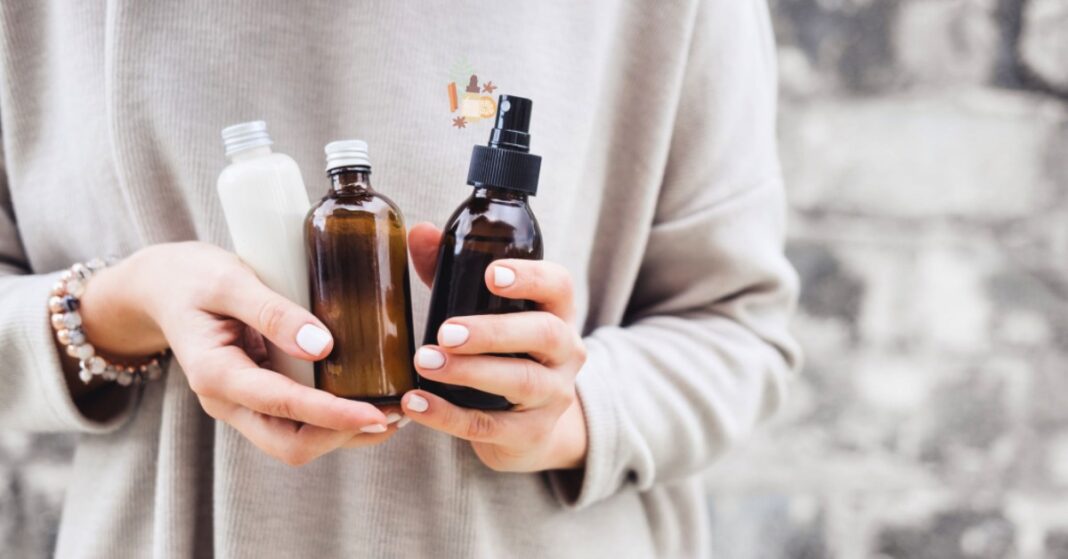Retinol, a type of vitamin A, offers a range of fantastic benefits for the skin. As a powerful antioxidant, it minimizes signs of aging and wrinkles, improves skin texture, and even improves skin tone. Plus, it’s been shown to stimulate collagen production, giving your skin a more youthful and firm appearance. In short, retinol is a true skincare hero that can help you achieve a glowing, radiant complexion.
If you have never used retinol before, starting with a low concentration is best and gradually working up to higher concentrations over several weeks or months. This will allow your skin time to fully adapt and adjust to the retinol and reduce the risk of irritation.
How to use Retinol in your Skin Care Regime, and what is the correct order of using Retinol?
Retinol must be used on dried skin to ensure optimal absorption of the product. If you apply it to damp skin, the product may not penetrate as effectively.
The order of application is important because it allows each product to work effectively and minimize any potential irritation or adverse effects. Here is just a basic guide about the correct order for using retinol, but everyone’s skin is different.
- Cleanser: A cleanser is used to remove dirt, oil, and makeup from the skin, allowing the other products to penetrate and work more effectively.
- Toner (optional): If you use a toner, it should be applied after cleansing to help balance the skin’s pH level and prepare the skin for the next steps.
- Niacinamide: Niacinamide is a water-soluble vitamin that strengthens the skin barrier and lowers the inflammation and sign of aging. By applying it before the retinol, it can help to minimize any potential irritation or dryness caused by the retinol.
- Retinol: Being a powerful ingredient, it can penetrate deeply into the skin to work its magic. It should be applied to dry skin before any other products to ensure maximum absorption and effectiveness.
- Hyaluronic acid: Hyaluronic acid is a hydrating ingredient that can help to plump up and moisturize the skin. It can be applied after retinol to help minimize any potential irritation or dryness caused by the retinol.
- Moisturizer: It is key to use a moisturizer on top to seal and shield the skin. And nourish the skin by locking in the benefits of the other products and providing additional hydration and protection.
- Sunscreen: If you’re using retinol during the day, it’s very crucial to apply sunscreen with at least an SPF of 30 to shield the skin from UV rays, which can cause further damage and aging.
This is important to keep in mind that these are the general guideline, and the order may vary depending on the specific products you’re using and your own skin type. It’s always best to read the instructions on each product and follow them accordingly. Also, remember to patch-test new products and consult with a skin specialist if you have any concerns or experience irritation.
Precautions to Keep in Mind When Using Retinol for Skincare
Doing a patch test Retinol when introducing a new skincare product to your routine is always advised. It helps determine if the product is suitable for your skin and prevents any adverse reactions. To patch test, apply a small amount of the product to a small, inconspicuous area of skin and wait 24-48 hours to see if any redness, irritation, or itching occurs. It’s also essential to introduce new products gradually and one at a time.
When it comes to using retinol, you should keep a few things in mind to avoid irritation or other negative side effects. For starters, it’s important to steer clear of certain products that may not play nice with retinol. But that’s not all – there are some other precautions you should take to ensure a smooth and effective retinol experience. Here’s what you need to know.
- Retinol should be applied to clean, dry skin. You should wait a few minutes after washing your face or showering to allow your skin to dry completely before applying retinol. Applying retinol to damp skin can increase the risk of irritation or sensitivity. Also, avoid using other products, such as moisturizers or serums, on top of the retinol until it has been fully absorbed by the skin.
- Other exfoliants: Retinol is a powerful exfoliant, so it’s best to avoid using other exfoliating products, such as scrubs or acids, while using it.
- Vitamin C: Vitamin C and retinol are both potent ingredients, and using them together may cause irritation or sensitivity. It’s best to use them on alternating nights.
- Benzoyl peroxide: Commonly used to treat acne, but it can be irritating when combined with retinol. If you need to use both products, use them at different times of day and consult with a dermatologist for guidance.
- Use a pea-sized amount: A little goes a long way with retinol, so it’s important to use a small amount to avoid irritation.
- Start slowly: If you’re new to using retinol, start with a low concentration and use it once or twice a week to allow your skin to adjust.
- Use sunscreen: Retinol can make your skin more sensitive to UV damage. Therefore, using a broad-spectrum sunscreen with at least SPF 30 when going outdoors is very important.
- Be patient: Retinol takes time to work, and you may not see results overnight. You have to be patient and consistent with your use, and you should start to see improvements in your skin over time.
- Avoid eye area: Retinol can be irritating to the delicate skin around the eyes, so it’s best to avoid applying it in this area. Instead, use a separate eye cream, or retinol cream formulated explicitly for eyes.
- Don’t use during pregnancy: Retinol is not recommended for use during pregnancy or breastfeeding, as it may be harmful to the baby.
- Use at night: Retinol is best used at night, as it can make your skin more sensitive to the sun. If you need to use it during the day, be sure to use broad-spectrum sunscreen to protect your skin.
- Use a moisturizer: Retinol can be drying to the skin, so it’s important to follow up with a moisturizer to help hydrate and soothe the skin.
- Store properly: Retinol can be unstable and lose its effectiveness if not stored properly. Keep it away from light and heat, and use it within the recommended timeframe indicated on the packaging.


